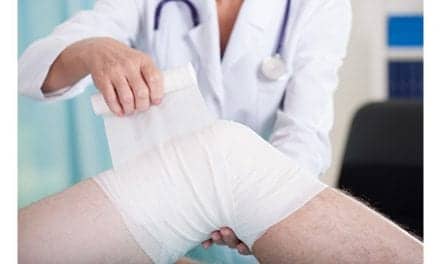A gel developed by researchers at Hokkaido University may potentially be used to help treat joint injuries.
The researchers note that, in a study using rabbit femurs, the newly developed hydrogel was able to bond spontaneously and strongly to defected femurs.
The research group had previously developed a gel called double-network gel (DN gel), which exhibited low wear and inductive function for cartilage regeneration. However, since its main component was water, the gel had difficulty bonding with other surfaces, according to a media release from Hokkaido University.
As explained in their study, published recently in Advanced Materials, the team added hydroxyapatite (HAp) to the surface of the DN gel by dipping it in calcium solution and phosphate solution.
They then transplanted the HAp-coated DN gel (HAp/DN gel) into a defected bone in a rabbit. They also coated the regular HA gel another rabbit bone. Four weeks later, the team observed that the HAp-coated gel had bonded to the bone very strongly, while the non-HAp-coated gel (DN gel) had not bonded at all. Electron-microscopic analysis revealed that the newly formed bone component in the defected area had penetrated into the gel surface, and fused to it seamlessly, per the release.
“The bonding between HAp/DN gel and bone mimics physiological bonding seen with cartilage, ligament, and tendon, causing less stress to the body. We expect that the gel could be used to firmly attach artificial ligament or tendon to bone,” says Jian Ping Gong, one of the study’s lead authors, in the release.
[Source(s): Hokkaido University, Science Daily]





